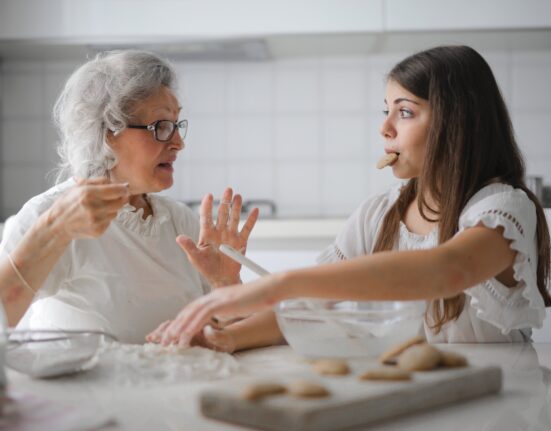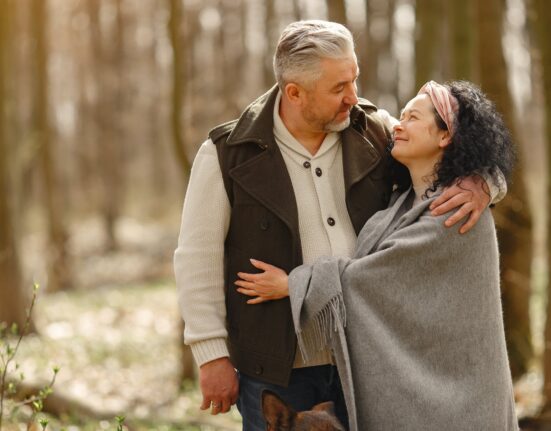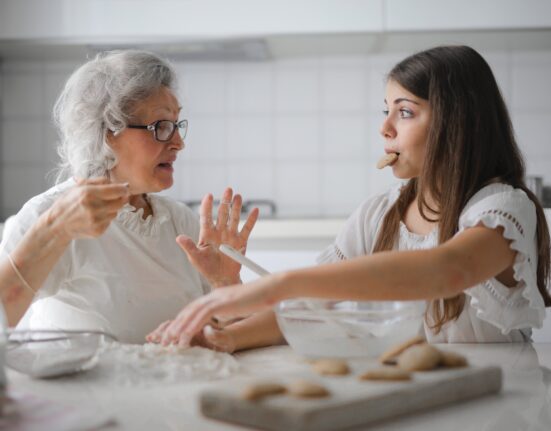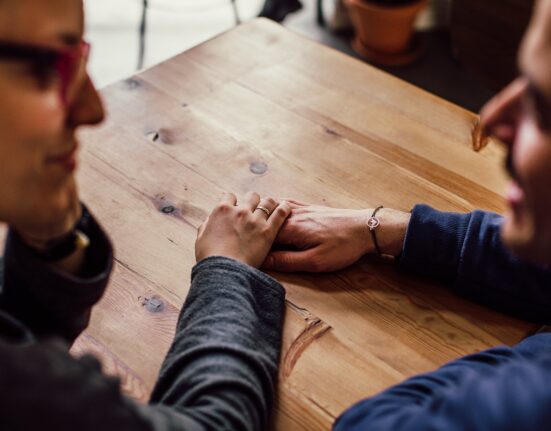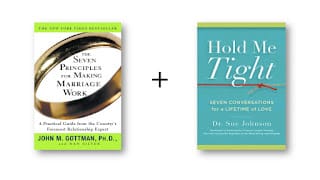 In the 1970’s and 1980’s, two pioneers in marital research were quietly gathering data on how one can create pleased lasting relationships. Dr. John Gottman’s and Dr. Susan Johnson’s research was initially known mostly amongst academic circles because therapists were still afraid of doing couples therapy. Gottman’s and Johnson’s research brought an unprecedented empirical foundation to what was often considered chaotic, unpredictable, and thankless couples therapy work. Today, Gottman and Johnson have reached world renown and are considered two of essentially the most influential figures in couples therapy, not only for academics but therapists in addition to most of the people.
In the 1970’s and 1980’s, two pioneers in marital research were quietly gathering data on how one can create pleased lasting relationships. Dr. John Gottman’s and Dr. Susan Johnson’s research was initially known mostly amongst academic circles because therapists were still afraid of doing couples therapy. Gottman’s and Johnson’s research brought an unprecedented empirical foundation to what was often considered chaotic, unpredictable, and thankless couples therapy work. Today, Gottman and Johnson have reached world renown and are considered two of essentially the most influential figures in couples therapy, not only for academics but therapists in addition to most of the people.
Difference in therapy approaches
The philosophical and technical differences between their approaches to relationship research and therapy have generated separate and passionate followers. Both researchers have developed unique models of loving and successful adult relationships, but from different points of view and different sets of knowledge. Gottman gave us a science of healthy relationships from systematic longitudinal and observational research on couples not in therapy. He focused on each couples in distress (the Disasters of Relationships) in addition to couples in lasting, satisfying relationships (the Masters of Relationships).
Susan Johnson, then again, built her foundation of loving relationships on the theoretical framework of John Bowlby in addition to hundreds of hours of decoding and tracking couples therapy sessions. So Johnson’s model is an empirical model of couples therapy. Unfortunately the sphere of couples therapy is split into many various approaches each vying for the very best status because the only model that works or the one model shown to have the perfect efficacy. At the bottom level where therapists are working with couples is distress, I argue that using only one model is limiting and potentially not helping couples. Couples in distress desire a therapist who understands their dilemmas and patterns accurately, has a roadmap to recovery, and is expert at implementing the techniques.
I propose that therapists working with couples should thoughtfully consider which model is best suited to which couples and when to bring in techniques from one approach or one other to assist a pair make progress on their stuck issues. In this text, I describe my approach to integrating the Gottman method with Sue Johnson’s EFT.
Gottman Method
The Gottman method is the brainchild of each of Drs. John and Julie Gottman, John’s wife and co-creator of the Gottman Method. The Gottmans bring a relationship skill constructing and existential lens while Sue Johnson is firmly grounded in Adult Attachment Theory. There are also differences in their view of couples therapy and the role of the therapist. The Gottmans warn against therapists becoming indispensable to the couple and encourage them to teach couples to administer their very own physiology, conflict, or intimacy system. Johnson, then again, uses the therapist as a “secure base” and encourages them to construct a secure container in which the anxiously or avoidantly attached partner can take the chance of expressing vulnerable feelings and needs.
There could also be other differences, however the exciting frontier just isn’t in their uniqueness or differences but their growing confluence of concepts and ideas and the need of therapists to integrate each approaches in a seamless couples therapy that may profit each clinicians and couples.
Here is among the common ground I see in Gottman and Johnson that permits me to flexibly shift from a relationship-building to an attachment-oriented therapist because the couple’s emotional system requires.
Alternating between and combining the methods
When a pair enters therapy with me, I begin with the Gottman Method. The Sound Relationship House is a straightforward, practical, and aspirational model that each couple can understand and adopt with little resistance. Who doesn’t desire a relationship that has a beautiful friendship base, tackles gridlocked and perpetual conflict with ease and humor, and a shared meaning system that inspires the perfect in oneself?
The structured strategy of the Gottman assessment is reassuring, straightforward, and transparent. Couples appreciate having the ability to tell the story of their relationship, being heard individually and together, and having the ability to fill out the surveys and conduct a personal review of their relationship strengths and growth edges. The contracting process inspires hope as each strength is highlighted and celebrated and growth edges are reassuringly connected with specific skills they are going to learn inside an inexpensive time frame. Couples feel a way of promise and relief as they walk away with their Sound Relationship House magnets and a map of the journey they’re going to embark on with my guidance.
And then the actual work begins!
Both Gottman and Johnson recognize the need of an emotional focus and the powerful influence of attachment histories, styles, and internal working models in adult intimate relationships. I may be helping the couple replace their 4 horsemen with the suitable antidotes, but an element of me can be tracking their negative emotional cycle. Often time the absorbing nature of negative emotions (Gottman) and the unresolved hurts and wounds (Johnson) result in predictable negative cycles and prevent the couple from having honest and vulnerable conversations.
I might offer one spouse the sensible details about criticism and contempt as they struggle to know how one can express their frustration. Simultaneously I hear, validate, and explore the attachment needs and emotions of the opposite partner who’s fighting their internal reactions rooted in early childhood patterns that create each interpretations in addition to motion tendencies when confronted with conflict. I have the connection science and easy language of Gottman in my right hand and a more emotion-focused dynamic and interpersonal toolbox from Johnson in my left hand, and I weave each into the therapeutic process.
Integrating approaches
Similarly, I help couples process an argument with the Aftermath of a Regrettable Incident exercise and help them learn how one can make their dialogues just a little bit bit higher than the last time. At the identical time, I search for the anatomy of the fight. Why was this particular argument more painful for the wife? Does her attachment history shed some light on her ability to let go of her anger? As they process the clearly laid out exercise and take the steps one after the other, the structure keeps the conversation protected and manageable. I use my skills as an attachment-oriented observer to assist the withdrawn spouse re-engage, or I help the partner who’s casting blame to melt their internal dialogue and reach out with tenderness.
Sometimes the mixing of Gottman and Johnson is more obvious as when I am working with bids and turning towards and helping a pair process failed bids. I know from each the Gottmans and Johnson that not all hurts are the identical and that some emotional injuries may be traumatic once they trigger deeply held beliefs concerning the self, the opposite, and about intimate relationships.
Gottman gives me the Sound Relationship House theory to assist couples see the connection between the emotional checking account and how the friendship base downregulates negativity, increases positivity, intimacy, romance, and connection. Johnson gives me the tools to repair a depleted emotional checking account, to take couples gently through the strategy of first acknowledging and then healing attachment injuries, and restoring the bond that when existed.
Final thoughts
I do must confess that the Gottman Method is my past love. The Gottmans paint the connection landscape for me in a way that matches easily with the way in which I work. Johnson’s methods draw me into the turbulent waters of primary emotions that require more effort from me in order to remain afloat. I find that each are vital. My hope is that the sphere of couples therapy embraces the technical flexibility afforded by integrative approaches as a brand new generation of couples bring us unique and difficult sources of pain that should be addressed and resolved.

